valentinaonthemoon replied to your photo “Sometimes when I’m birdwatching” …
Friday, July 6th, 2018valentinaonthemoon
replied to your photo “Sometimes when I’m birdwatching”
This is beautiful!!
anonsally replied to your photo “Sometimes when I’m birdwatching”
!!!!!!!!!!!!!!! Holy cow, lies, this is an AMAZING photo. So gorgeous. What a view!!!
It really was incredible. I’ve put some more detail after a cut, if anyone is interested.
Even though we lived in Mammoth Lakes for several years in the 90s, I’d never visited this particular spot before. But on our visit this time I chased the Grace’s Warbler that local ebirders had reported on Bald Mountain Road, and when I went there on Monday evening after work I not only got to see the warbler (yay!), I also realized what a neat area it was. So I took today off and set my alarm for 4 a.m. to go explore.
I’d wondered on Monday where the road the Grace’s Warbler was on led to. The maps showed an area labeled “Indiana Summit Research Natural Area”; some googling led me to the web page of the US Forest Service’s Research Natural Areas program.
The Research Natural Area (RNA) program is a nationwide system created to protect a network of federally administered public lands for the primary purposes of maintaining biological diversity, providing baseline ecological information, and encouraging research and university natural-history education. Areas selected exemplify minimally disturbed ecosystems representative of the range of widespread and unique natural vegetation types on federal lands.
The Indiana Summit RNA, it turns out, is the oldest RNA in California, having been established in 1932. The Eastern Sierra Jeffrey Pine forest is one of my favorite natural environments, and the Indiana Summit RNA preserves “a rare pristine example” of that forest. Most of the Eastern Sierra has been logged extensively over the years; mature Jeffrey Pines are scattered here and there, but in a lot of places you’re basically in a tree farm where all the trees are similarly aged “teenagers”.
But for whatever reason the land in the area just east of Indiana Summit (a low hill west of Bald Mountain) had never been logged, and after the RNA was established in 1932 no logging was allowed. You can actually see the boundary of the RNA in the Google Earth imagery below; the RNA is the area that’s darker, reflecting the presence of so many mature Jeffrey Pines:
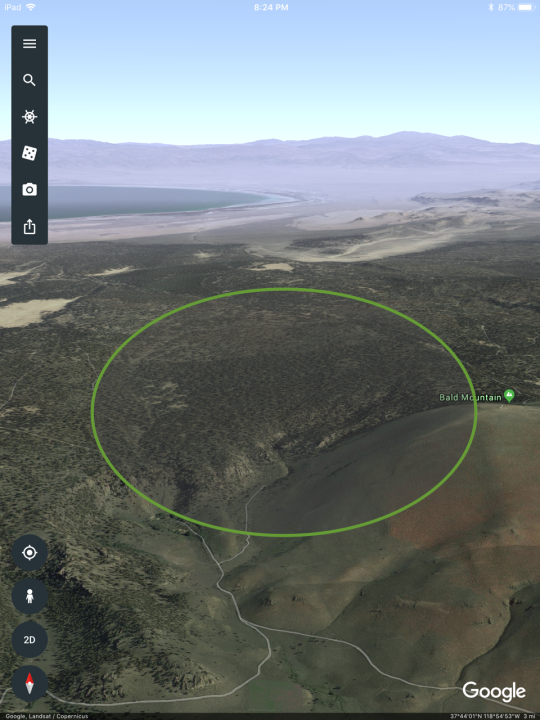
The view here is looking north, with the eastern edge of Mono Lake in the background. I drove in via Bald Mountain Road, a well-graded dirt road that leads in from US 395. There are no roads in the RNA; I parked at the end of a dirt road near the southwest corner. The sun was just coming up, and the view was amazing.
If you look closely you can see in that Google Earth image how the southwest edge of the RNA ends at a steep cliff; I was standing on the edge of that cliff when I took the photo Sally commented on; here’s another shot from there:
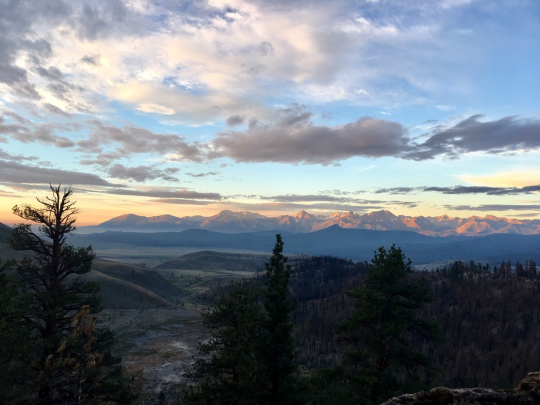
The sun is just hitting the Eastern Sierra in the distance, though it hasn’t yet risen where I am.
I walked into the RNA and counted birds from four different locations: the southwest corner, a point along the western boundary, the northwest corner, and the middle of the northern boundary.
When I walked in from the north, crossing that ruler-straight boundary line you can see in the Google Earth image, it was breathtaking to suddenly be surrounded by so many mature Jeffrey Pines:

The Indiana Summit RNA burned in August 2016, after a lightning strike ignited the Clark Fire. In some areas along the western edge where I explored earlier in the day most of the trees had been killed, but in the interior of the RNA it was mostly the understory and the bottoms of the trunks that had burned, while the upper parts of the mature trees appeared to be okay:
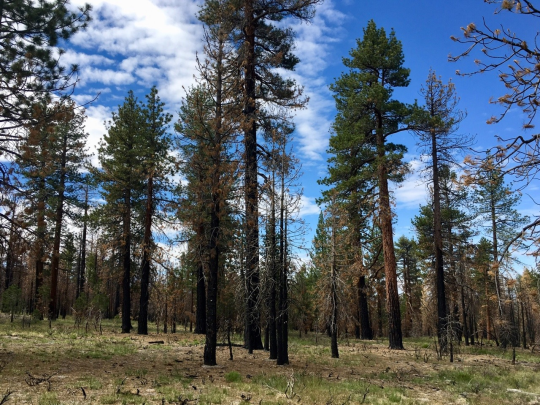
As I saw when I birded the area around Jameson Lake for the Carpinteria Christmas Count after the Thomas Fire, woodpeckers were abundant in the burn area. My woodpecker total for the morning was:
- 1 Lewis’s Woodpecker
- 1 Williamson’s Sapsucker
- 18 Hairy Woodpecker
- 3 White-headed Woodpecker
- 4 Black-backed Woodpecker
- 4 Northern Flicker
I may have counted a few birds more than once as they moved around, but even so, there were a lot of woodpeckers. :-)
Besides the mature Jeffrey Pine forest, another feature the Indiana Summit RNA seeks to preserve is the archaeological record:
The Paiute Indians harvested larvae of piagi (Pandora
moth [Coloradia pandora]), which cyclically attack Jeffrey pine, by digging
trenches encircling the trunks of mature trees. These piagi trenches may still be
seen surrounding some of the larger Jeffrey pines, although their evidence has
been largely obliterated by logging and other disturbance in adjacent areas.
I found a number of those trenches in the RNA; here are two of them:
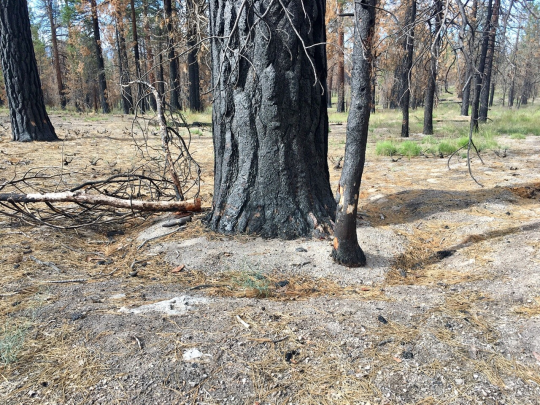
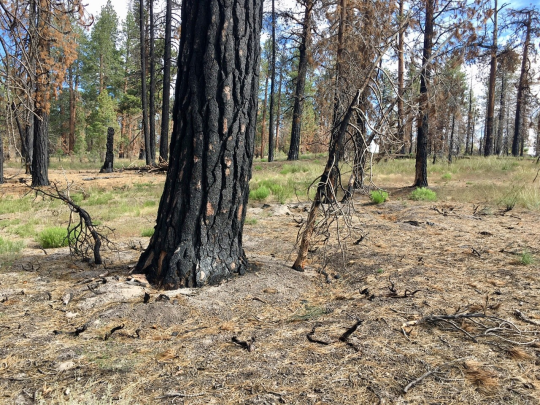
I’d told Linda I’d be back by noon; I ended up being only 20 minutes late, which is pretty good for me when I’m birdwatching. I’d like to go back again, though. I want to check out the eastern side of the RNA, where there are some more mesic White Fir stands on the north slope of Bald Mountain.
Next time! :-)
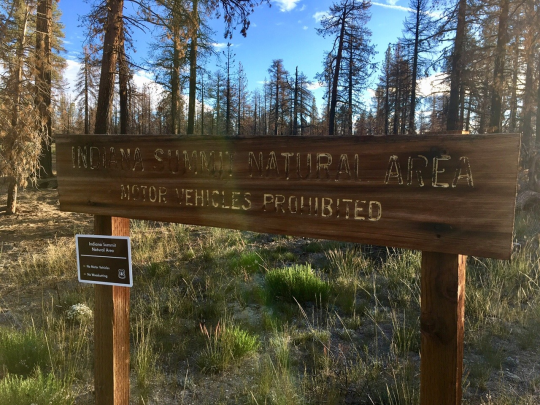
Reposted from http://lies.tumblr.com/post/175631483676.
